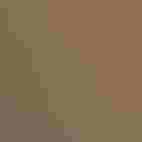Mountain Quail
At a Glance
In foothills and mountains of the far west, coveys of these striking birds scurry through the manzanita thickets. Mountain Quail are often overlooked, because they keep to dense cover; when approached, they often sit motionless in the brush, where they are very difficult to spot. They become more conspicuous in spring, when the rich callnotes of the males, given at long intervals, echo across the slopes.
All bird guide text and rangemaps adapted from Lives of North American Birds by Kenn Kaufman© 1996, used by permission of Houghton Mifflin Harcourt Publishing Company. All rights reserved.
Category
New World Quail, Upland Ground Birds
IUCN Status
Least Concern
Habitat
Forests and Woodlands, High Mountains, Shrublands, Savannas, and Thickets
Region
California, Northwest, Rocky Mountains, Southwest, Western Canada
Behavior
Flap/Glide, Flushes, Running
Population
260.000
Range & Identification
Migration & Range Maps
Unlike other North American quail, may regularly migrate in some areas, but only short distances. Migrates on foot, moving to lower elevations for winter.
Description
11" (28 cm). Two long thin plumes on head (often combining into one) stand straight up. Blue-gray head and chest, chestnut face, broad white bars on chestnut sides.
Size
About the size of a Robin
Color
Black, Brown, Gray, Red, White
Wing Shape
Fingered, Rounded, Short
Tail Shape
Rounded, Short, Square-tipped
Songs and Calls
Its frequent call is a loud echoing kyork or woook. Other notes include soft whistles.
Call Pattern
Falling
Call Type
Scream
Habitat
Dense brush in wooded foothills and mountains. Most common in pine-oak woodland, coniferous forest, and chaparral; sometimes in pinyon-juniper woods or in scrub at lower elevations. May be common in areas of second-growth brush after fires or clearcuts. Requires dense low thickets for cover. During hot weather, rarely found more than a mile from water.
Sign up for Audubon's newsletter to learn more about birds like the Mountain Quail
Behavior
Eggs
9-10, sometimes 6-15. Creamy white to pale buff. Incubation is apparently by both sexes (female may do more), about 24 days.
Young
Downy young leave nest shortly after hatching; are tended by both parents and led to food, but young feed themselves. Parents are very active in defense of young, putting on distraction displays to lure away predators. Development of young and age at first flight not well known. Usually one brood per year, sometimes two at low elevations or in very good conditions.
Feeding Behavior
Has a wide variety of foraging techniques. Picks up items from ground, often scratching among leaf litter; uses feet to dig for bulbs; climbs in shrubs and trees to pick berries, leaves; jumps up from ground to reach seeds and berries in low plants.
Diet
Includes seeds, bulbs, leaves, berries, insects. Diet varies with season. Eats large amounts of seeds, bulbs, acorns; fair amounts of green leaves, flowers, berries; also some insects, fungi.
Nesting
Males call in breeding season to defend territory. In courtship, male faces female, fluffs feathers, droops wings. Nest site is on ground in dense cover, usually sheltered by a shrub, log, or grass clump. Nest is a shallow depression, lined with grass, pine needles, leaves, feathers.
Conservation
Conservation Status
Still reasonably common in highlands over most of its range. May have disappeared from northern limits in southwestern British Columbia (but possibly was introduced there, not native).
Climate Threats Facing the Mountain Quail
Choose a temperature scenario below to see which threats will affect this species as warming increases. The same climate change-driven threats that put birds at risk will affect other wildlife and people, too.





